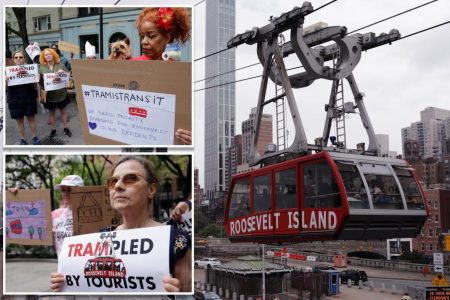The American labor market is currently navigating a complex and evolving landscape, characterized by seemingly contradictory signals. While job growth remains robust and unemployment sits at a historically low level, recent data reveals a potential softening in labor demand. The number of Americans receiving unemployment benefits surged to 1.9 million in the week ending January 11, 2025, the highest figure since November 2021, indicating a potential shift in the dynamics of employment. This increase in continuing claims, coupled with a modest rise in initial unemployment applications, suggests a growing difficulty for those seeking new employment, potentially signaling a cooling job market despite overall strong employment figures.
This apparent contradiction stems from a confluence of factors, most notably the Federal Reserve’s aggressive interest rate hikes implemented throughout 2022 and beyond. Designed to combat inflation, these higher rates have also had a dampening effect on hiring decisions across various industries. While December 2024 saw a surprisingly strong addition of 256,000 jobs, exceeding expectations and contributing to a total of 2.2 million jobs added in 2024, this figure is still lower than previous years and highlights a potential shift towards a more moderate pace of job growth. Furthermore, the increase in unemployment claims suggests that even with job creation, individuals are experiencing challenges finding or retaining employment.
Adding to this complexity is the uneven impact of economic conditions across different sectors. While sectors like healthcare, retail, and government experienced notable job growth in December, other industries, particularly manufacturing and technology, are exhibiting signs of strain. This is evidenced by recent announcements of layoffs by major corporations such as Meta, which plans to reduce its workforce by 5% or approximately 3,600 positions, as part of a restructuring effort. Brown-Forman, the distiller of Jack Daniel’s whiskey, is also cutting its global workforce by 12% due to shifts in consumer behavior and potential trade war concerns. Starbucks, too, is streamlining corporate roles, adding to the growing list of companies adjusting their workforce in response to changing economic conditions. These targeted layoffs contribute to the rise in unemployment claims, even as overall job growth remains positive.
These developments raise important questions about the overall health and direction of the American economy. Economists are divided on whether the observed trends represent a significant cooling of the labor market or simply a normalization after a period of unusually rapid growth following the pandemic disruption. Some argue that the economy is reaching a new equilibrium, characterized by higher inflation and interest rates compared to the pre-pandemic era. This perspective suggests that the current levels of job growth and unemployment claims are more sustainable in the long run. Others remain cautious, emphasizing the potential negative effects of sustained high interest rates and the looming uncertainty surrounding a second Trump administration, including the impact of potential trade wars.
The Federal Reserve’s monetary policy plays a crucial role in this unfolding scenario. After aggressively raising interest rates to combat inflation, the Fed has signaled a more cautious approach going forward, with only limited rate cuts expected in 2025. This cautious approach reflects the complex balancing act the Fed faces – attempting to curb inflation without triggering a significant economic downturn. The labor market will be a key indicator of the effectiveness of this policy, and its performance will likely influence future decisions on interest rates. The rise in unemployment claims, even amidst continuing job growth, will be a critical data point for the Fed to consider.
Looking ahead, the American labor market faces a period of uncertainty and adjustment. The interplay of robust job growth, rising unemployment claims, targeted corporate layoffs, and the Federal Reserve’s monetary policy creates a complex and dynamic environment. Both job seekers and employers are grappling with the long-term implications of a post-pandemic economy marked by persistent inflation, tighter credit conditions, and the ongoing uncertainty surrounding the political and economic landscape. The evolution of the labor market in the coming months will be a crucial barometer of the overall health and trajectory of the US economy, providing valuable insights into the effectiveness of the Federal Reserve’s policies and the long-term consequences of the current economic climate.










